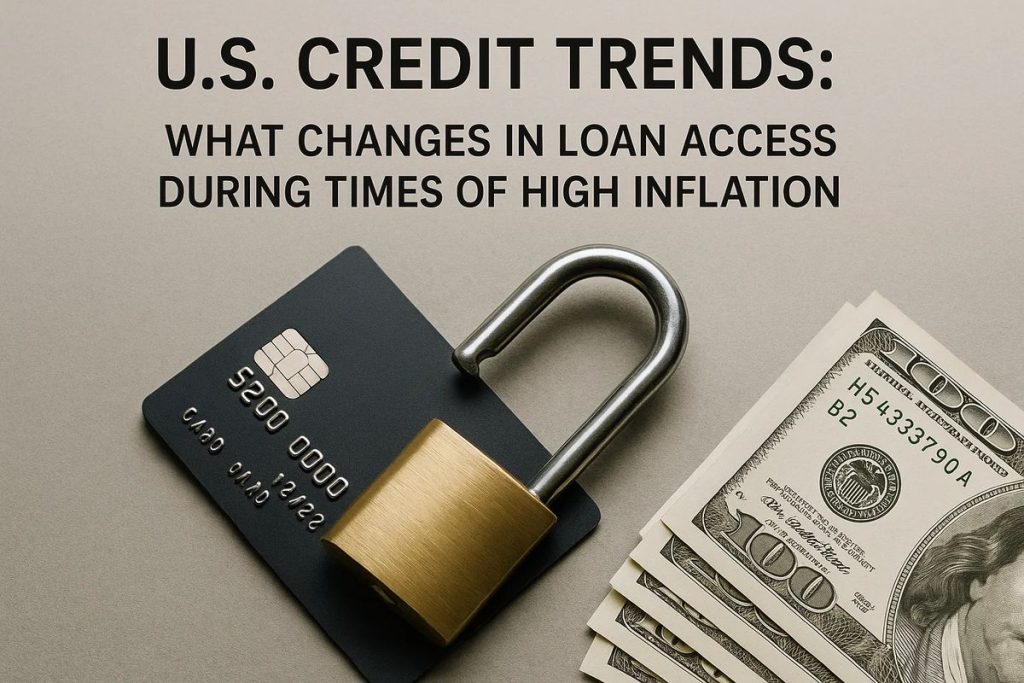Understanding the impact of changing economic conditions on loans is critical for both borrowers and lenders. High inflation can significantly alter the landscape of credit access, affecting interest rates, lending criteria, and consumer behavior.
Whether seeking a mortgage, an auto loan, or personal credit, it is vital to understand how market dynamics shift during periods of economic uncertainty. This guide delves into recent trends in borrowing in the United States, shedding light on how high inflation influences financial accessibility and decisions.
How high inflation affects loans

As inflation rises, the cost of borrowing inevitably follows suit. Higher inflation often leads to increased interest rates, making it more expensive for individuals to take out credit. Lenders adjust their rates to account for the decreased purchasing power of money. Consequently, people may find it harder to qualify for favorable terms when seeking new financial products.
Access to borrowing also changes during inflation. Lenders tend to tighten their credit standards as they seek to mitigate risk in a volatile economy. This means potential borrowers might face more stringent requirements, such as higher credit scores or larger down payments.
Adapting borrowing strategies during inflation
During periods of elevated prices, it’s prudent for borrowers to reconsider their financial tactics. Seeking out fixed-rate financial products can be a smart move, as they provide protection against future rate hikes. Additionally, consumers should focus on improving their creditworthiness, as a strong credit profile can open doors to more favorable rates and terms.
Borrowers should also consider alternative funding options that might be less sensitive to inflationary pressures. Credit unions, for example, often offer more competitive rates than traditional banks and can be a viable option during challenging economic times.
Navigating the post-inflation credit landscape
Following a period of significant inflation, understanding the lasting effects on the lending environment is key. Once inflation begins to stabilize or decrease, it doesn’t necessarily mean an immediate return to pre-inflation conditions. Lenders may remain cautious, maintaining stringent lending criteria for some time.
Staying informed about economic trends and policy decisions is crucial in anticipating changes in the credit landscape. As government interventions and policy adjustments play a significant role in correcting inflation, keeping an eye on how these measures affect credit access can empower borrowers to better time their financial decisions.
Practical steps for future financial planning
Planning for future economic shifts involves a proactive approach. Building an emergency fund can provide a safety net against rising costs and interest rates. Additionally, regularly reviewing financial standings, including credit scores and debt levels, can position borrowers to capitalize on opportunities as market conditions improve.
Ultimately, a well-rounded strategy involves not only reacting to current conditions but also preparing for future ones. This includes staying versatile and adaptable in financial planning and remaining open to various borrowing options. With a deeper understanding of the dynamics of inflation and its impact on lending, consumers and businesses can navigate the evolving credit landscape with confidence and agility.
Conclusion on inflation’s impact on credit
Navigating the complexities of the lending landscape during high inflation necessitates careful consideration and strategic planning. As the economy shifts, understanding how these changes affect borrowing becomes increasingly important. By keeping informed about inflationary trends and adapting strategies accordingly, borrowers can maintain greater financial stability.
By focusing on shoring up financial health and planning proactively, individuals and businesses can effectively manage the challenges posed by high inflation. Ultimately, combining knowledge, strategy, and flexibility will enable borrowers to navigate these dynamic times successfully and secure favorable lending outcomes.

